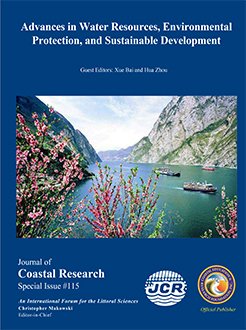Yang, C.Y.; Jiang, W.C., and Jian, N., 2020. Life cycle environmental impact assessment of three urban drainage systems for non-point source pollution control. In: Bai, X. and Zhou, H. (eds.), Advances in Water Resources, Environmental Protection, and Sustainable Development. Journal of Coastal Research, Special Issue No. 115, pp. 367-372. Coconut Creek (Florida), ISSN 0749-0208.
Existing studies on novel urban drainage systems for diffuse pollution control caused by combined sewer overflow and first flush runoff from separated sewer system generally focused on pollution control performances, of which environmental impacts from their life cycle failed to be comprehensively addressed. In this paper, life cycle environmental impacts of three novel urban drainage systems, namely, the combined system with CSO interception and treatment (P1), separate system with first flush interception (P2), and LID-equipped separate system (P3) were assessed. After analysing inventory based on resource and energy consumption, as well as pollutants emission, life cycle environmental impacts were evaluated via SimaPro 8.0 software and CML-IA baseline method associated with China LCI and Ecoinvent 3.0 databases, followed by contribution and sensitivity analysis for interpretation. The results indicated that: (1) The LID-equipped separate system was moderately the best drainage system for diffuse pollution control. (2) For wastewater collection and conveyance subsystems (S1), its operation in the combined system with CSO interception and treatment and its construction in LID-equipped separate system caused large environmental burden. (3) The LID-equipped separate system behaved the greatest sensitivity to the change of databases and service lifespan.





